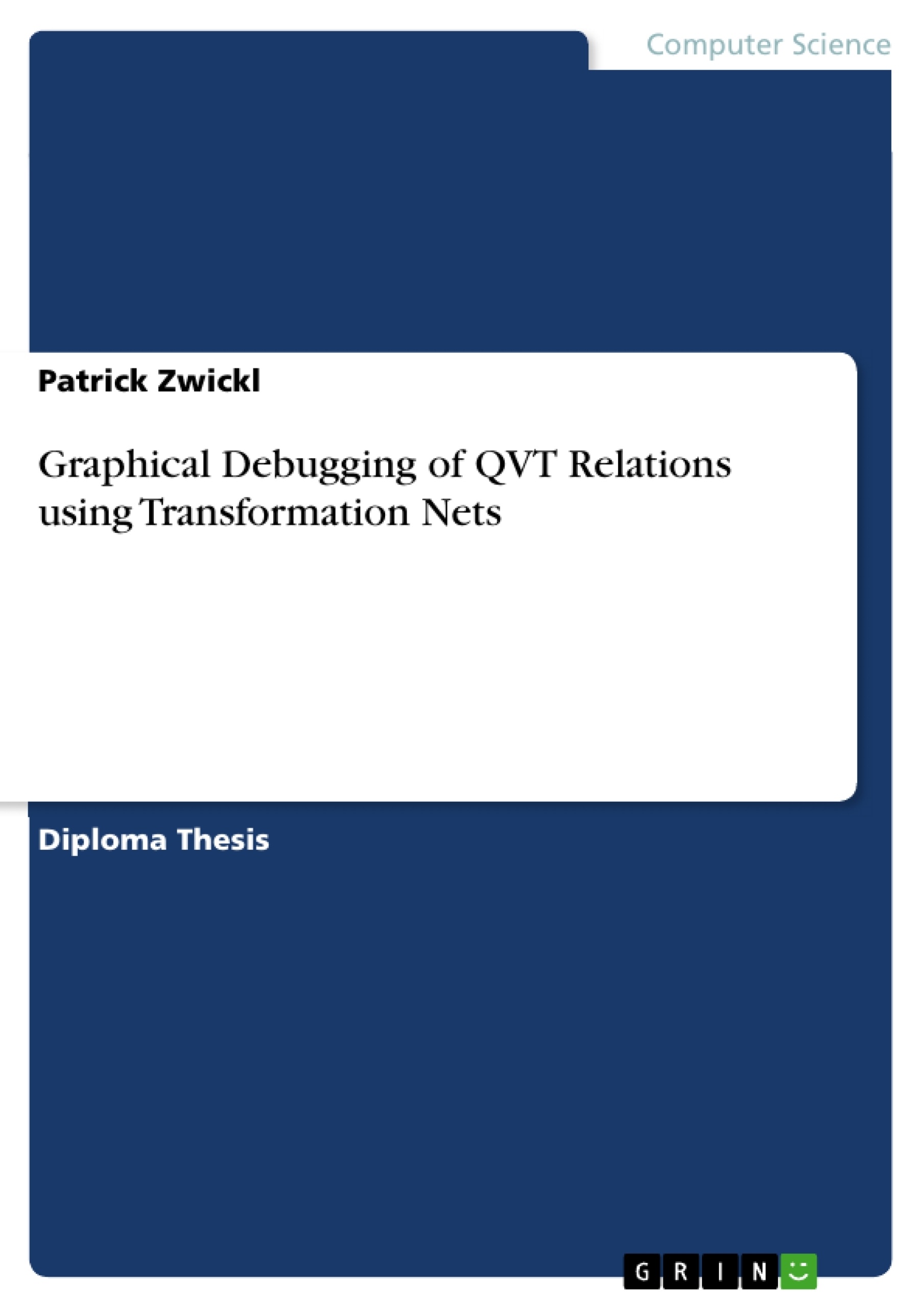Model transformations (MT) play a key role in the Model Driven Engineering (MDE) paradigm, leading to the standardization of the Query/View/Transformation (QVT) model transformation language by the Object Management Group (OMG). Until now, however, this language did not attract the same interest as the Unified Modeling Language (UML), because of the lack of adequate debugging facilities which are necessary regarding the following three problem areas: First, declarative languages like QVT Relations (QVT-R) hides the operational semantics of transformations. Only the information provided by the interpreter, as well as the tendered inputs and returned outputs are available for tracking the progress of transformations. Furthermore, the ordering of transformation application is hidden by the MT engines providing only a black-boxes view to the users. This can lead to the problem of impedance mismatches between design and runtime. These characteristics of QVT-R are assets for developing, but are handicaps for debugging. Second, QVT-R code is specified on higher abstraction level than its execution and state-of-the-art debugging. This deteriorates the ability to deduce causes from produced results. Third, the information content responsible for operating MTs is spread over several artifacts including the input model, a resulting target model and the QVT-R code. As a consequence, the reasons for a particular outcome are hard to be derived from the involved artifacts. This severely harms the ease of debugging.
Therefore, this master thesis tackles the mentioned problems by visualizing QVT-R as Transformations Nets, using the MT framework “Transformations On Petri Nets In Color” (TROPIC) based on Colored Petri Nets (CPN). This can be seen as explicit definition of operational semantics on a high abstraction level providing a white-box view for debugging QVT-R. This thesis proposes a procedure model formulated in a conceptual approach and in a prototypic implementation striving for bridging the existing gap between these two different paradigms by mapping the concepts of QVT Relations to such nets. In this thesis three particular contributions are provided: (i) a solution approach for unidirectional mappings producing target models from an existing source model, (ii) the support for model inheritance, (iii) and synchronization approaches for timely and version-based incremental changes.
Inhaltsverzeichnis (Table of Contents)
- Abstract
- 1 Einleitung
- 2 Verwandte Arbeiten
- 3 Model-Driven Engineering
- 3.1 Modellierungssprachen
- 3.2 Metamodelle und Meta-Metamodelle
- 3.3 Modeltransformationen
- 3.4 QVT Relations (QVT-R)
- 3.4.1 Modellierungselemente in QVT-R
- 3.4.2 QVT-R Transformationen
- 3.4.3 Transformation von Modellen
- 4 Transformation Nets (TROPIC)
- 4.1 Farb-Petri-Netze
- 4.2 Transformationen auf Farb-Petri-Netzen
- 4.3 Modellierung von QVT-R als Transformation Nets
- 5 Implementierung
- 5.1 Visualisierung
- 5.2 Prototyp
- 6 Diskussion und Ausblick
- 7 Zusammenfassung
- Literatur
Zielsetzung und Themenschwerpunkte (Objectives and Key Themes)
This master thesis aims to address the lack of debugging facilities for the QVT Relations (QVT-R) model transformation language by visualizing QVT-R as Transformation Nets, using the TROPIC framework based on Colored Petri Nets (CPN). This approach provides an explicit definition of operational semantics on a high abstraction level, offering a white-box view for debugging QVT-R. The thesis proposes a procedure model, both conceptually and through prototypic implementation, to bridge the gap between these two paradigms by mapping QVT Relations to Transformation Nets.
- Debugging QVT-R Transformations
- Visualizing QVT-R using Transformation Nets
- Bridging the gap between QVT-R and TROPIC
- Implementing a prototypic visualization tool
- Exploring the application of Transformation Nets for debugging model transformations
Zusammenfassung der Kapitel (Chapter Summaries)
Chapter 1 introduces the topic of the master thesis, highlighting the need for better debugging facilities for QVT-R. Chapter 2 reviews existing work related to model transformations and debugging techniques. Chapter 3 provides an overview of Model-Driven Engineering (MDE), focusing on modeling languages, metamodels, model transformations, and QVT-R. Chapter 4 delves into the concept of Transformation Nets (TROPIC) based on Colored Petri Nets (CPN), and presents a method for modeling QVT-R as Transformation Nets. Chapter 5 describes the implementation of a visualization tool and a prototype for debugging QVT-R using Transformation Nets. Finally, Chapter 6 discusses future directions and concludes the thesis with a summary of the main contributions.
Schlüsselwörter (Keywords)
Model transformations, QVT Relations (QVT-R), debugging, Transformation Nets (TROPIC), Colored Petri Nets (CPN), visualization, MDE, model-driven engineering, operational semantics.
- Quote paper
- Patrick Zwickl (Author), 2009, Graphical Debugging of QVT Relations using Transformation Nets, Munich, GRIN Verlag, https://www.grin.com/document/141732



